How do I convert a common home security light into a
remote ballast grow light?
| Added by:
10k Last edited by:
10k Viewed: 590 times |
Rated by 48 users:
9.40/10 |

How do I convert a home security
light into a remote ballast grow light?
Contributed by: Spliffco, Inc.
For some reason growlight manufacturers are
completely ignoring the small, personal grower. A quick
look around Overgrow and you can see some very
respectable bud being grown under 150's, and even 70
watt HPS lights. But the smallest ready made remote
ballast growlight you can buy is a 250 watter, and they
usually cost well over $150 (US).
So, as usual
in the medicinal herb growing world, you need to take
matters into your own hands.
Heres how to turn
a 150 watt HPS security light available at most Home
improvment stores, into a nice remote-ballast grow
light.
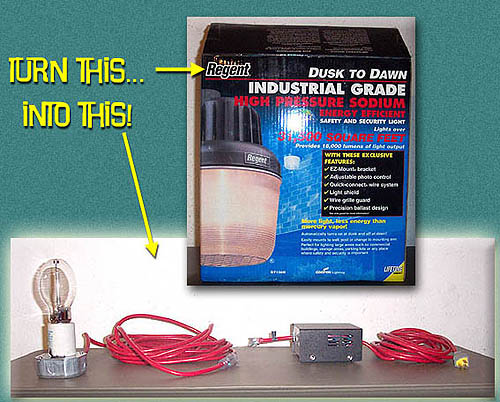
Materials & Tools:
MATERIALS
Regent GT150H, (About $79)
Heavy Duty extension cord of suitable length
One
heavy duty grounded electrical plug end (male)
Electrical box
Electrical box plate
Romex
cable connectors (3)
Wire nuts
Bolts, nuts
washers
Strip of metal to secure ballast
Project
case from Radio Shack ($6.99) #270-253A
TOOLS
5/16 nut driver (for removing
parts from the casing -- regular pliers will work)
Philips head screwdriver
Regular screwdriver
Hammer
Power drill and assorted bits
Metal
file
Wire cutters
Utility knife or wire stripper
Diagonal Pliers
Pliers
Wiring
Diagram
Be careful...
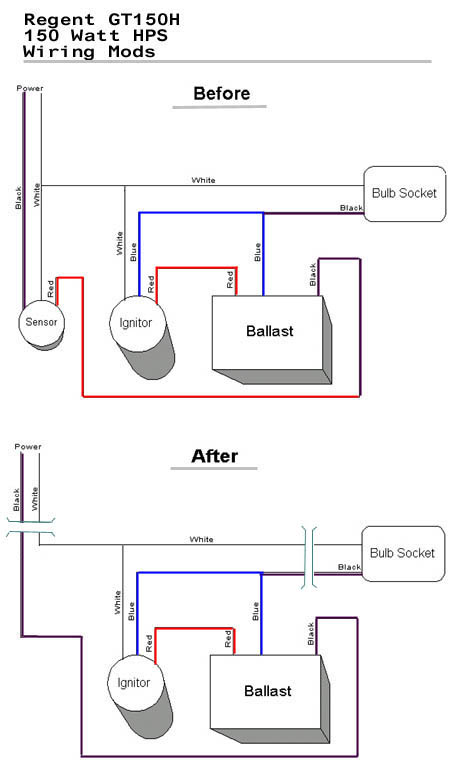
Remove guts
Remove the guts from
the casing - bulb socket, ignitor, light sensor socket,
ballast. The ballast was glued to the casing. I heated
the casing for a couple of minutes on an oven burner
(high), and when it was getting too hot to hold, I put
it on the floor and wedged a hammer between the ballast
and casing and popped it out gently.
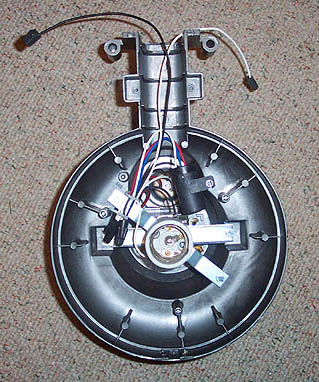
REMOVE LIGHT SENSOR
These
security lights are designed to automatically turn on
when it gets dark, so there is a built in light sensor
that needs to be removed.
Remove all wire nuts.
Disconnect the white wire that comes out of the
sensor (currently connected to all 3 other white wires).
Disconnect the black wire that comes out of the
sensor (currently connected to the black power in
wire).
The red wire coming out of the sensor is
currently connected to the black wire coming out of the
ballast. Remove the red wire, and then connect the black
wire coming out of the ballast to the black power in
wire.
Reattach wire nuts (there were 5
originally, now you only need 4).
Refer to
the wiring diagram!

WIRE THE SOCKET
The socket on
this particular light had some metal wiring connectors
that stuck up and made it impossible to attach to the
electrical plate without some modification (sorry no
photo). Just pull the black and white wires off of the
connectors, and cut the connectors down flush with
socket base with diagonal pliers. Now loosen the
connectors (screws inside the socket), slip the wires
under them and tighten them back down. Please use some
plastic electrical tape on the end of the socket to
prevent any chance of the metal from the connectors
making contact with the electrical box cover plate.
Secure the cord in the electrical box with a
romex cable connector and wire it to the socket: black
to black, white to white, secure with wire nuts. Some
electrical boxes have a green screw inside to fasten
ground wires, use that if yours has one, otherwise
fasten the green ground wire to the box using one of the
cover plate screws when you tighten the cover plate.
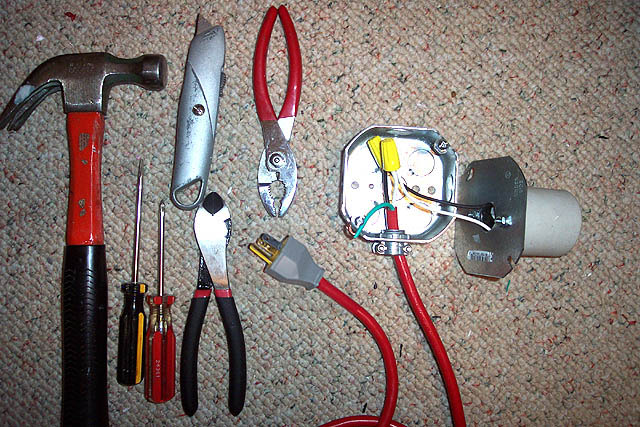
WIRE THE REMOTE BALLAST
Hopefully
you can see the wiring clearly in the photo, but if not,
refer to the wiring diagram for details.
Youre
going to have to cut some holes in the Radio Shack
project box for the power cords and some bolts to hold
the ballast, ignitor and ground wires down.
I
used a short length of metal (plumbing department) to
secure the ballast. The ignitor had a notch that made it
easy to bolt down. The ground wires from both electrical
cords are screwed to the base of the box.
Cut a
short length off the socket (female) end of the
extension cord and wire it appropriately (again - see
diagram). Wire the remaining electrical cord, including
the grounded male plug to the other end of the box.
Use a tie wrap to bundle up the wires in the box
and try to keep them away from the ballast, which will
heat up during use.
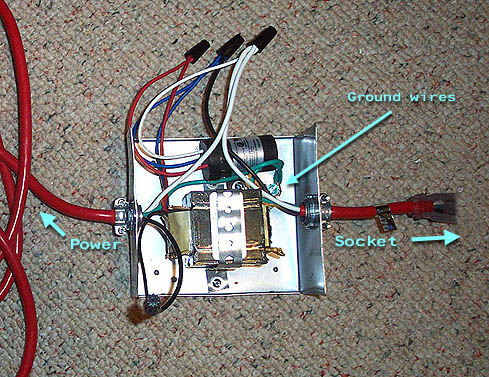
TEST IT!
If you've done everything
right, it should light.
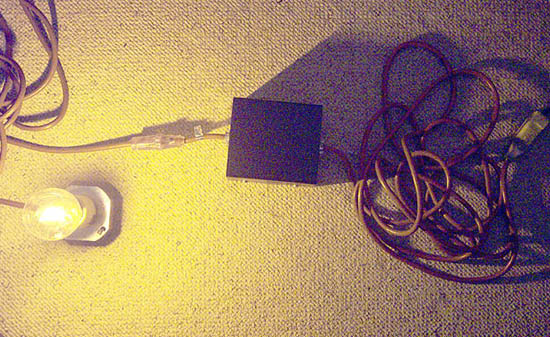
Now, build a reflector and youve got a nice
little custom grow light.
Safety
Warnings:
Always wire the male plug to the bulb
socket and the female receptacle to the ballast to avoid
possible electrocution! Always use an all metal project
box which already has ventilation cooling slots, or if
your project box has none, please cut adequate cooling
slots, or drill several vent holes in the ballast
enclosure (project box) to allow the heat to escape the
box. Not adding the cooling slots or holes, could result
in failure of the insulation and/or the transformer.
Also, please be sure the enclosure is located in a well
ventilated area to aid cooling.
|
| Last modified: 06:25 - Nov 23,
2001 |
| |